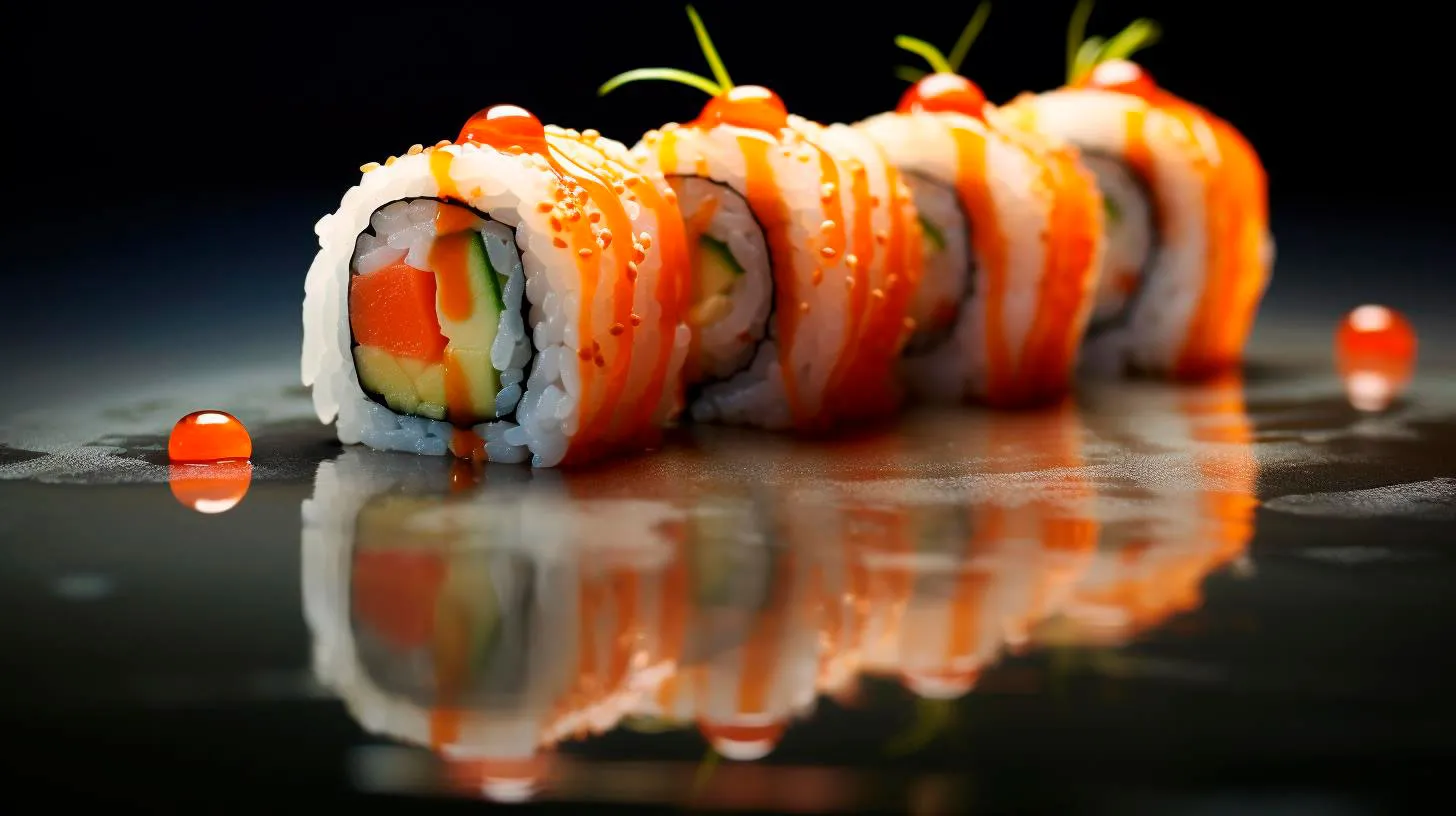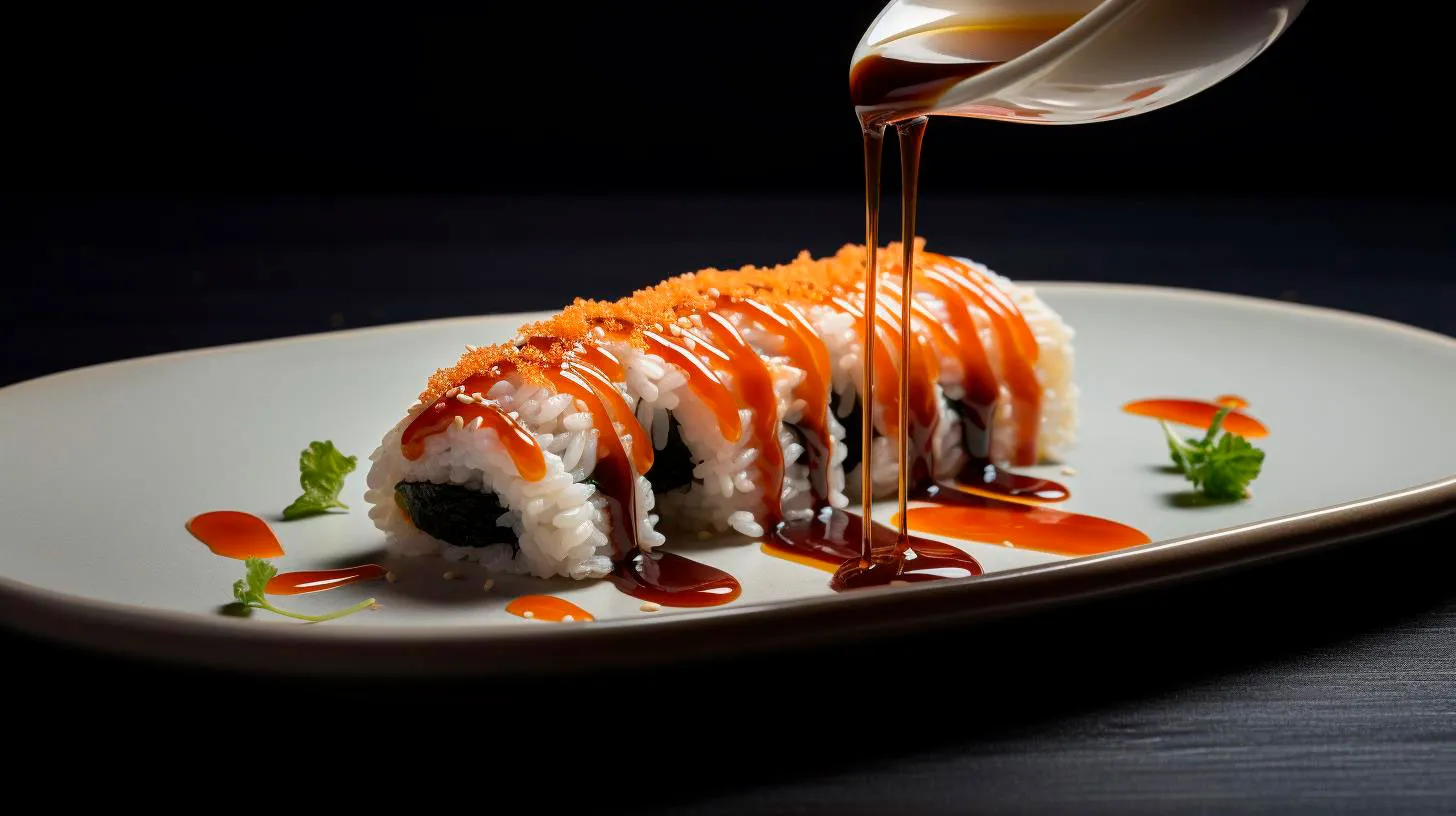From Tokyo to New York: The Rise of Sushi Bars and the Global Appetite for Sushi
The Rise of Sushi Bars
The history of sushi dates back centuries in Japan, originating as a way to preserve fish by fermenting it with rice. Over time, this preservation method developed into the sushi we know and love today. However, it wasn’t until the 19th century that sushi bars began to emerge in Tokyo as a place where people could enjoy fresh and affordable sushi.
Fast forward to the present day, and sushi bars have become a global phenomenon. With their minimalist and aesthetic designs, these establishments offer an authentic Japanese experience. Many sushi bars are helmed by highly skilled sushi chefs who have perfected the art of crafting delicate and delicious sushi rolls.
The Global Appetite for Sushi
Sushi’s popularity has transcended borders, captivating the taste buds of people from all walks of life. Here are a few reasons behind the global appetite for sushi:
- Health Benefits: Sushi is often considered a healthy choice due to its lean protein, omega-3 fatty acids, and low-calorie content. It’s a favorite among health-conscious individuals.
- Culinary Adventure: Sushi offers a unique dining experience, allowing people to explore different flavors and textures. The combination of fresh fish, crunchy vegetables, and vinegared rice creates a harmonious and flavorful taste.
- Instagram-Worthy: With its vibrant colors and artistic presentation, sushi has become a favorite subject for food photographers and social media enthusiasts. The visually appealing sushi rolls make for excellent posts on platforms like Instagram.
- Celebrity Endorsements: A-list celebrities have embraced sushi, further boosting its popularity. Their lavish displays of sushi consumption in movies or on social media have introduced the cuisine to a wider audience.
New York City: A Sushi Haven
When it comes to sushi outside Japan, few cities can rival New York City’s sushi scene. The Big Apple is home to an impressive array of sushi bars and high-end restaurants, each offering a unique take on this beloved cuisine. Here are some key reasons why New York City has become a sushi haven:
- Diverse Culinary Landscape: New York City is a melting pot of cultures and cuisines, allowing for the fusion of traditional sushi with innovative flavors and techniques. Sushi chefs in the city often experiment, creating new sushi combinations that cater to a diverse range of palates.
- Seafood Freshness: Located near the Atlantic Ocean, New York City has convenient access to fresh seafood, including premium fish varieties used in sushi. This proximity ensures that sushi lovers can enjoy the highest quality ingredients.
- Competitive Market: With numerous sushi bars vying for customers, the competition in New York City’s sushi scene pushes chefs to continuously innovate and deliver exceptional dining experiences. This competitive market drives the sushi bars to strive for excellence.
- Cultural Fusion: Sushi in New York City has transcended its Japanese roots, embracing local flavors and cultural influences. You can find sushi rolls inspired by Mexican, Italian, and even American cuisine, reflecting the city’s diverse population and culinary trends.
Key Takeaways
The rise of sushi bars from Tokyo to New York City highlights the global appetite for this delicious Japanese cuisine. Here are the key takeaways:
- Sushi bars have become a global phenomenon, offering an authentic Japanese culinary experience.
- The global appetite for sushi is fueled by its health benefits, adventurous flavors, and visually appealing presentation.
- New York City has emerged as a sushi haven, thanks to its diverse culinary landscape, access to fresh seafood, and a competitive market.
- The fusion of traditional sushi with local flavors and cultural influences has made sushi even more enticing to a broader audience.
So, whether you’re exploring the bustling streets of Tokyo or strolling through the vibrant neighborhoods of New York City, be sure to immerse yourself in the rich and flavorful world of sushi. From classic rolls to innovative creations, sushi bars offer an exquisite dining experience that continues to captivate food lovers worldwide.
The Evolution of Sushi From Local Delicacy to Global Gastronomic Phenomenon
In this article, we delve into the rich history of sushi, its journey of transformation, and the factors that contributed to its widespread popularity.
A Glimpse into Sushi’s Origins
The roots of sushi can be traced back to the 2nd century AD when it first appeared in Southeast Asia as a method of preserving fish. Back then, sushi was simply a way to ferment fish by storing it in rice and salt, which helped to extend its shelf life. This initial form of sushi was known as narezushi. Over time, narezushi gained popularity as a quick and convenient snack among Japanese fishermen and travelers.
It was during the 19th century when the concept of nigiri sushi, the most recognized form of sushi today, began to take shape. Chef Hanaya Yohei is credited with revolutionizing sushi by combining freshly caught fish with hand-pressed vinegared rice. This innovation not only enhanced the taste of sushi but also allowed for a wider variety of fish and ingredients to be used.
Sushi’s Rise to Prominence
Initially, sushi gained popularity as an affordable street food option in Japan. However, it wasn’t until the early 20th century that sushi underwent a significant transformation and started making its mark beyond Japan’s borders.
One of the turning points in sushi’s journey was the Great Kanto Earthquake in 1923. The disaster forced many sushi chefs to leave Tokyo and spread their culinary skills to other parts of Japan, introducing sushi to new regions. Additionally, advancements in refrigeration technology allowed for the safe transportation of raw fish over longer distances, making it possible for sushi to reach more distant markets.
Another significant milestone for sushi’s global recognition was the influence of Tokyo’s sushi masters, who began to serve sushi at international events. This exposure sparked curiosity and intrigue among international visitors, thereby helping sushi gain traction on the global culinary stage.
Sushi Goes Global
With increased international travel and globalization, sushi transcended borders and captured the hearts (and palates) of people worldwide. The growing popularity of Japanese cuisine, healthier eating trends, and a rise in adventurous eating habits have contributed to sushi’s global expansion.
The Sushi Revolution
- Healthy and Nutritious: Sushi is packed with essential nutrients, including omega-3 fatty acids, lean proteins, and antioxidants.
- Cultural Fusion: Sushi has been adapted and fused with local flavors in different parts of the world, resulting in unique and diverse sushi variations.
- Fast and Convenient: Sushi’s grab-and-go nature makes it a convenient option for busy individuals seeking a quick and satisfying meal.
- Visual Delight: The artistry and presentation of sushi make it visually appealing, adding to its allure.
According to recent statistics, the global sushi market is estimated to reach USD 19.31 billion by 2024, with a compound annual growth rate (CAGR) of 4.1% from 2019 to 2024. The rise of sushi restaurants in major cities around the world is a testament to its enduring popularity.
Innovation and the Future of Sushi
Innovation continues to shape the evolution of sushi. Chefs have pushed the boundaries by experimenting with unconventional ingredients, flavors, and techniques. Additionally, the rise of sushi-making classes and DIY sushi kits have made sushi more accessible to individuals who wish to try their hand at creating this culinary masterpiece at home.
While traditional sushi will always hold a special place in the hearts of purists, the fusion of different culinary influences and the emergence of modern sushi trends provide endless possibilities for sushi lovers. From sushi burritos to sushi donuts, the possibilities are expanding beyond imagination, appealing to an even wider audience.
In Conclusion
Sushi’s journey from a humble preservation technique to an international sensation is a testament to its adaptability and appeal. Its fusion with various cuisines and willingness to embrace new flavors have propelled sushi to the forefront of the global culinary scene.
As sushi continues to evolve, one thing remains clear: its enduring popularity is a testament to its timeless taste, nutritional benefits, and the sensory experience it offers to every adventurous food lover.
Sushi Fusion: How Global Cuisine Embraces the Aesthetic and Flavors of Sushi
So, what exactly is sushi fusion? It’s the perfect blend of traditional sushi techniques and non-traditional ingredients, resulting in a harmonious fusion of flavors and textures. This culinary trend has gained immense popularity among food enthusiasts, making it a noteworthy addition to the global food scene.
The Rise of Sushi Fusion
The globalization of culinary trends has contributed to the rise of sushi fusion. As travel has become more accessible and people have become more adventurous with their palates, chefs have started experimenting with traditional sushi ingredients and incorporating local flavors and ingredients from other cuisines. This fusion allows for the creation of unique dishes that cater to different tastes and preferences.
Some noteworthy combinations in sushi fusion include Mexican-inspired sushi rolls with jalapenos and avocados, sushi burritos that combine elements of Japanese and Mexican cuisine, and even sushi pizzas that incorporate Italian flavors. These innovative creations have taken the culinary world by storm, appealing to both sushi traditionalists and those seeking new and unexpected flavors.
The Aesthetic Appeal
While taste is paramount, the aesthetic appeal of sushi fusion dishes cannot be overlooked. These culinary creations often showcase vibrant and colorful ingredients, beautifully arranged on plates or served in unique vessels. Chefs bring their creativity to the forefront, ensuring that each dish is not only delicious but also visually captivating.
By incorporating different cultural influences, sushi fusion restaurants offer a diverse range of presentation styles. From the intricately rolled sushi maki to the artistic sashimi platters, these dishes are a feast for the eyes as well as the taste buds. This attention to detail and visual appeal has made sushi fusion a hit on social media platforms, where users eagerly share their visually stunning dining experiences.
The Advantages of Sushi Fusion
Sushi fusion offers several advantages that contribute to its growing popularity:
- Cross-cultural appeal: By incorporating flavors and ingredients from different cuisines, sushi fusion appeals to a wide range of palates and preferences.
- Creative expression: Chefs have the freedom to experiment with different ingredients, creating unique dishes that showcase their culinary skills and creativity.
- Expanded options: Sushi fusion expands the traditional sushi menu, providing customers with a broader range of choices and flavors to explore.
- Cultural exchange: Sushi fusion showcases the beauty of cultural exchange, bridging the gap between different culinary traditions and promoting a deeper understanding of diverse cultures.
Key Takeaways
Sushi fusion has revolutionized the traditional sushi dining experience by incorporating flavors, techniques, and presentation styles from various cultural backgrounds. The results are visually stunning and delicious dishes that appeal to a diverse range of taste buds.
Remember these key points about sushi fusion:
- Sushi fusion blends traditional sushi techniques with non-traditional ingredients.
- It appeals to a wide range of palates by incorporating flavors from different cuisines.
- The aesthetic appeal of sushi fusion dishes is visually captivating.
- It allows for creative expression and culinary experimentation.
- Sushi fusion promotes cultural exchange and understanding.
As sushi fusion continues to gain popularity, we can expect more exciting combinations and innovative dishes to emerge. Whether you are a sushi purist or an adventurous foodie, exploring the world of sushi fusion is sure to be a delightful and palate-expanding experience.



